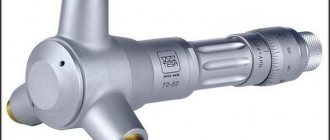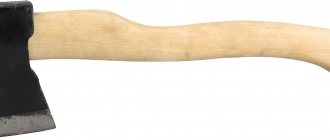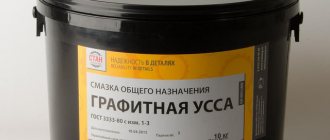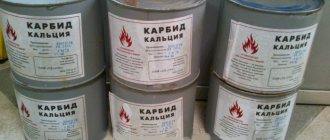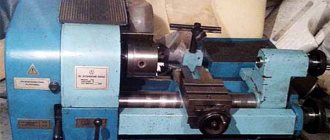Any type of repair is preceded by preliminary preparation.
The degreaser is used when further processing is necessary: metal before painting (for example, a car); enamel before polishing; components before gluing.
This process is often approached with disdain, using formulations that were outdated many years ago. You must understand that, for example, glue when connecting parts will not provide the necessary adhesion if the surfaces are not treated in advance.
Is it possible to degrease with solvent? If you are striving for quality, then the answer is not worth it. In this article we will look at the main problems that arise if the final preparation of products for gluing, painting and polishing is not carried out.
Why is solvent dangerous?
Releases into the air are especially dangerous. The impact of solvent vapors on the human central nervous system can be irreparable: from a narcotic effect to an acute negative reaction of the respiratory tract. Physical interaction of the liquid with human skin can cause severe skin irritation.
Interesting materials:
What types of standard buttons can be used in Power Point? What types are distinguished among lexical homonyms? What fabrics lose strength when wet? What kind of axes did the Vikings have? What items cannot be returned? What flowers are unpretentious for the garden? What flowers are suitable for a herbarium? What flowers grow in poor soil? What flowers go with roses in a flower bed? Which flowers last the longest?
Basic methods of degreasing
To achieve the maximum service life of certain elements, before further processing they must be treated to remove all types of contaminants. Traces of oils and grease, as well as hand marks, must be removed from the surface. Careless attitude towards degreasing - reduce the period between paintings, deal with the consequences of breakage of the glued element.
The following methods are distinguished:
- Mechanical is the most basic, but the most labor-intensive. Using sandpaper, drills and metal brushes, the top layer is removed. With this method, it is almost impossible to ensure the absence of scratches on the surface being treated.
- Ultrasonic - used exclusively in production, when it is necessary to ensure the highest processing accuracy. Accordingly, the cost of such degreasing becomes very expensive, which does not allow its use for domestic purposes.
- The chemical method is the most effective and widespread method. Its versatility allows it to be used both in businesses and at home.
- Electrochemical degreasing is used in large industries. This is due to the fact that this method makes it possible to reduce the consumption of chemical reagents, but requires a special bath into which electrodes are connected. Essentially, this is an improved chemical method.
From the above we can conclude that the most accessible and easy-to-use degreasing method for the consumer is chemical. It is used everywhere, be it degreasing a car body before painting or gluing plastic elements. Now the question arises, which product to choose? Previously, people did not think about whether it was possible to degrease with solvent, and used it along with kerosene and gasoline, since they were the most affordable.
Currently, there is a whole line of chemicals that fight grease with maximum efficiency, increasing the density of paint, glue and polishing agents on the surface. Many products create special thin films and help fight corrosion. Depending on the material of the surface being treated, compositions with high performance are selected.
Processing of inorganic substrates
Often split products from:
- glass, mirrors;
- porcelain stoneware;
- concrete;
- stone;
- ceramics and porcelain.
A standard gluing scheme is used:
- The surface is cleaned of coarse dirt.
- High-quality cleaning is carried out.
- The adhesive composition is applied.
- Elements or individual parts are compressed.
- You need to wait for the glue to harden.
Chemicals for inorganic materials:
- solvents;
- alcohol;
- acetone;
- other suitable liquid formulations.
SHOULD BE CONSIDERED! Concrete and ceramics retain a lot of moisture inside themselves. Therefore, after each stage of preparation for gluing, the parts must be thoroughly dried. And to degrease concrete, it is advisable to use a perchlorethylene solution.
General characteristics of the substance
Let's consider the issue of solvent and what it is. In appearance, the substance is a transparent or light yellow liquid; in chemical essence, it is a mixture of hydrocarbons, a volatile substance. It is a product of petroleum and coal refining (petroleum and coal type), is highly flammable and can act as a solvent, thinner, degreaser, and cleaner. May contain impurities of sulfur and phenol (applies to high quality solvent), but the main composition is as follows:
- naphthenes or cycloalkanes (substances found in oil from which aromatic hydrocarbons are obtained);
- paraffins (add flammability to the composition, are a wax-like substance, a mixture of alkanes);
- cyclic hydrocarbons (organic compounds of hydrogen and carbon).
Solvent is obtained by pyrolysis of petroleum fractions or by coking coal.
Chemical formula of the solvent Source patentimages.storage.googleapis.com
See also: Catalog of companies that specialize in paints and varnishes and related work
Video description
In the following video you can see how parts of the car are washed with solvent:
Contact with skin is not so critical, but in this case you also need to act quickly. After washing, wipe the affected piece of skin dry. It is especially important when working with a solvent solution to ventilate the room in which the work is being done well. If a substance ignites, you must remember that you cannot use water to extinguish the fire; only firefighting foam will do.
Briefly about the main thing
Solvent is a solvent, degreaser, volatile, chemically active substance produced from petroleum products or coking coal.
Solvent includes paraffins, naphthenes, and cyclic hydrocarbons.
The use of solvent affects a lot of household areas; it is also used in printing, in the chemical industry in the production of shoe polishes, paints, building compounds, fertilizers, and so on.
When working with solvent-containing solutions, you must strictly follow safety precautions to avoid getting a chemical burn.
Ratings 0
How to degrease metal?
The surfaces of metal parts are usually contaminated with lubricants, oils, and dyes. This planned or unintentional coating is formed during the manufacturing process or to resist rusting. Therefore, before gluing, the base should be cleaned, and thoroughly. That is, remove not only dirt and protective coating, but also oxides (scale) and rust.
In industrial conditions, parts are treated with steam. But at home it’s easier to use improvised means.
To clean metal elements use:
- White Spirit;
- vodka;
- petrol;
- acetone;
- any other solvent.
Moisten a rag with the liquid. Then use this rag to thoroughly wipe the area where the glue will be applied.
IMPORTANT! The solvent is a liquid caustic mixture that can burn the skin and mucous membranes and cause an allergic reaction. Therefore, it is recommended to work in personal protective equipment, a respirator and gloves.
If the part is small in size, it is simply immersed in a liquid that dissolves fat.
How to make sure that a part is degreased?
Carry out a wettability test. Water is dripped onto the part, observing the movement of the drops. On a completely degreased surface, the drop gradually spreads in an even layer. But if the drop retains its shape, then additional metal processing should be done before gluing.
NOTE! This testing method is excellent for testing iron, inorganic surfaces, and plastic. But it is not suitable for testing processed aluminum and magnesium compounds.
Why do you need to degrease the coating?
The purpose of this measure is to remove fatty components from the base of the product, which may further prevent the uniform distribution of the adhesive, harm the formation of the protective layer and deteriorate the quality of the substance as a whole.
The process is very important when using high-quality products, since for reliable, high-quality gluing, the substrate must have a higher surface tension than the gluing solution.
A drop of the mixture on the treated base should spread evenly into a thin layer. And if small balls form, then the coating was not degreased properly, and the cleaning should be repeated, or the paste is simply not suitable for the material.
Contamination with fat-containing substances can occur due to the ingress of any technical oils, polishing compounds, coolants, and sometimes due to contact with hands.
This coating may be visible, but there is a high probability that seemingly absolutely clean substrates may contain invisible particles of dirt that can seriously harm the product being applied.
As a rule, it is customary to distinguish between 3 stages of pollution per square meter. m:
- minimum – up to 1 gram;
- medium – 1-5 grams;
- increased – 5 grams or more.
Why are grease stains dangerous?
- Poor adhesion between the coating and the product.
- Risk of swelling of the applied coating.
- Difficulties in applying the solution.
- Impossibility of creating a protective barrier layer.
- Cracking and peeling.
- Uneven bonding.
IMPORTANT! In order to avoid the problems listed above, it is necessary to thoroughly study the instructions for using the appropriate adhesive.
Solvent 646
The next popular degreaser will be solvent 646, which is often used in preparation for painting. The liquid is slightly yellowish in color with a sharp, specific odor.
The spectrum of its action is quite extensive. Excellently dilutes paints, degreases metal surfaces well, is indispensable for removing old layers of paint, and is used for washing painting equipment and tools.
It is recommended to use for thinning the following enamels:
- nitrocellulose NC;
- glypthal GF;
- melaninoamide MPs;
- acrylic;
- epoxy.
When working, it is necessary to maintain the temperature within +5…+30ᵒ C, and air humidity should not exceed 85%. In this case, the painted surface takes on a shiny, glossy appearance without spots or streaks.
Please note: solvent 646 is a fire and explosion hazard! When working, be sure to use respiratory, eye and skin protection! Work only in a ventilated area or with exhaust ventilation.
How to degrease plastic?
Everyone knows how difficult it is to glue plastic to another material. Its adhesion needs to be improved. In production shops, such parts are usually soldered. At home, soldering plastic can only be done by professionals with special skills and equipment. Otherwise, a high-quality connection will not work. But you can glue the plastic together by first degreasing it. We recommend that you read the reviews: how to remove glue from a sticker from plastic or yellowness?
Suitable:
- vodka;
- alcohol-containing liquids.
In normal situations, such treatment is sufficient for subsequent gluing. Wetting testing is carried out. But you need to choose the right product accurately and correctly.
How to do it better. First, an inconspicuous area of the part is wiped with the chemical. If the material does not deteriorate, then the entire surface is processed.
NOTE! Plastics are produced in all sorts of varieties. So, when exposed to polymers, an undesirable chemical reaction may occur.
